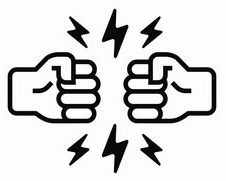When is a knee MRI with contrast needed?
When is a knee MRI with contrast needed?
In some cases, a contrast material may be used during the MRI scan to show certain structures more clearly in the pictures. The contrast material may be used to check blood flow, find some types of tumors, and show areas of inflammation or infection.
What does an MRI show in regards to a knee ligament injury?
Unlike an X-ray, which takes pictures of your bones, a knee MRI lets your doctor see your bones, cartilage, tendons, ligaments, muscles, and even some blood vessels. The test can show a range of problems, including: Damaged cartilage. Torn tendons or ligaments.
Can ligament tear be seen in MRI?
MRI is highly accurate at diagnosing ACL tears with accuracy, sensitivity and specificity of more than 90%[26-28]. Diagnosis of ACL tear on MR images is usually based on direct signs[26,28,29].
What is the best imaging to diagnose a ligament tear?
X-ray.
Can you wear pants for a knee MRI?
What should I wear? You will be asked to remove any clothing containing metal and all jewelry. You will be provided metal free clothing to change into such as a gown, shorts or pants.
Do you need dye for a knee MRI?
Most orthopaedic studies are done without contrast. The use of a contrast agent may be ordered by a physician who wants a more-detailed look at a particular part of the body. The injectable dye can be admitted intravenously to highlight areas of inflammation or directly into a joint (arthrogram).
What does ligament damage look like on MRI?
Injured ligaments on MRI may appear disrupted, thickened, heterogeneous, or at tenuated in signal intensity, and may be ab normal in contour. Fluidsensitive sequences are often helpful in detecting injury.
How is a torn ligament diagnosed?
Palpating the site and moving the joint can give them information on the extent of the injury. The next step is often to perform an X-ray to look for fractured or broken bones. 9 Magnetic resonance imaging (MRI) may be done to determine whether there is a partial or complete ligament tear.
Do you have to undress for a knee MRI?
The magnet on the MRI is very strong. For your safety, it is LDC’s policy that all patients undress and put on a gown to ensure that we do not get any artifacts from threads or hidden metal in your clothing. Not only for your safety, but we also want to make sure nothing obscures the images.
How should you dress for a knee MRI?
Please wear comfortable clothing, preferably cotton, and leave your jewelry and valuables at home.
Do you go all the way in for a knee MRI?
For most procedures, the patient goes into the MRI machine head-first, and the lower part of the body remains completely outside the machine. If you are having an MRI of your foot, knee or leg, you will go into the machine feet first, and your head and upper body will remain outside the machine.
What does it mean to have MRI of knee with contrast?
An MRI of knee with contrast refers to the use of a dye during the course of the test. Around 20% of all the MRI tests are with contrast.
How long does it take for an MRI of the knee?
The MRI of knee with contrast takes about an hour and a half to complete. Besides this, the doctor may also suggest an MRI of the thigh with contrast or an MRI of the leg with contrast to be done. This is however in extreme cases and may not necessarily be required.
How to diagnose meniscal tears on knee MRI?
To avoid errors in diagnosing meniscal tears, those interpreting MR examinations of the knee need to be aware of the attachments of the menisci and the normal variations in meniscal anatomy that may resemble a meniscal tear. In addition, by being aware of the patterns of meniscal tears, it is easier to diagnose the less common tears.
Where is intra articular contrast used in knee reconstruction?
Intra-articular contrast is used primarily in the patient who has had prior surgical meniscal repair. In general, the collateral ligaments are best evaluated in the coronal plane, and the cruciate ligaments and extensor mechanism are best evaluated in the sagittal plane.
